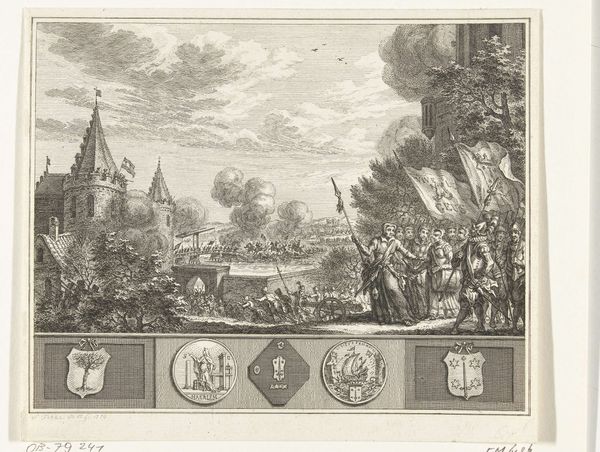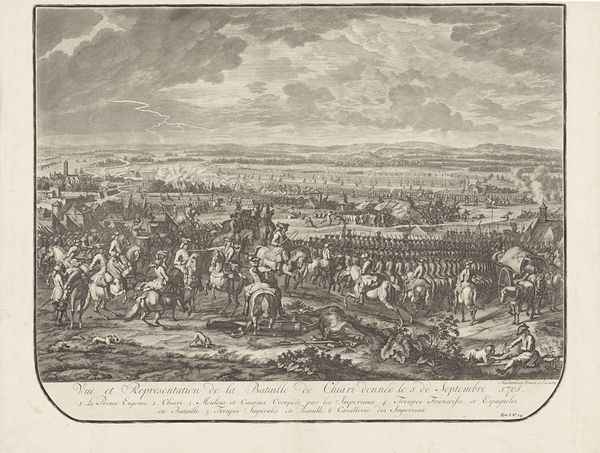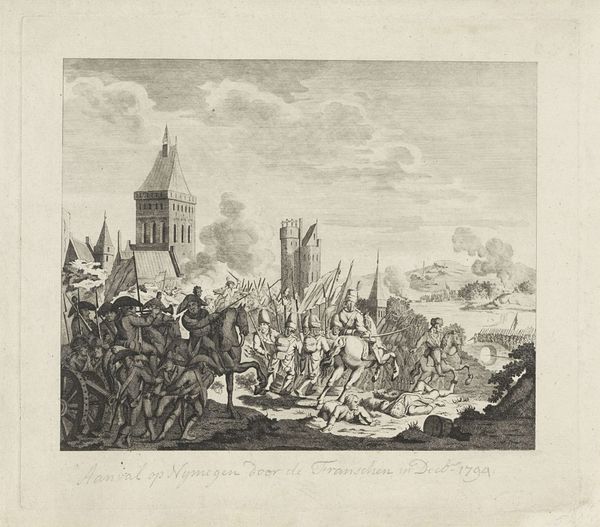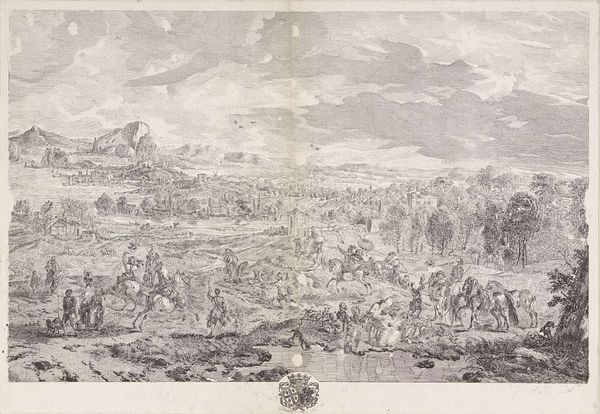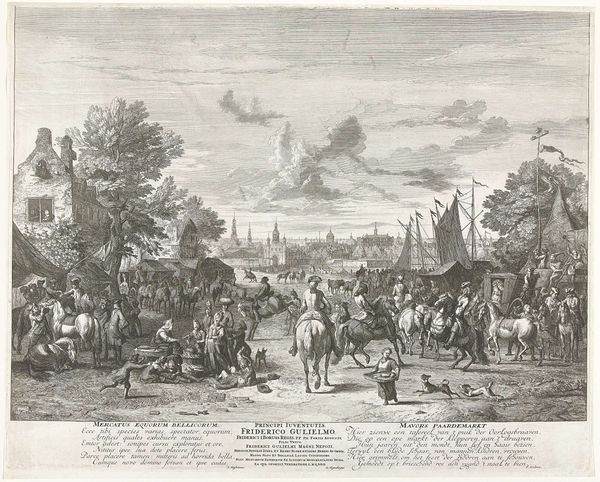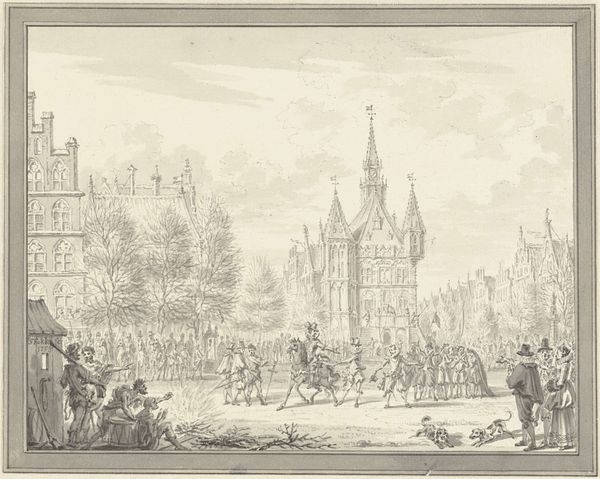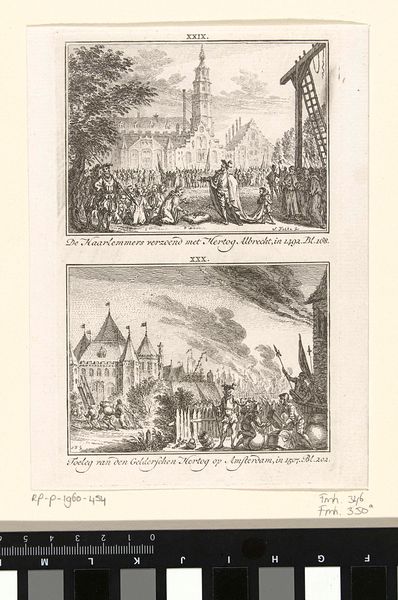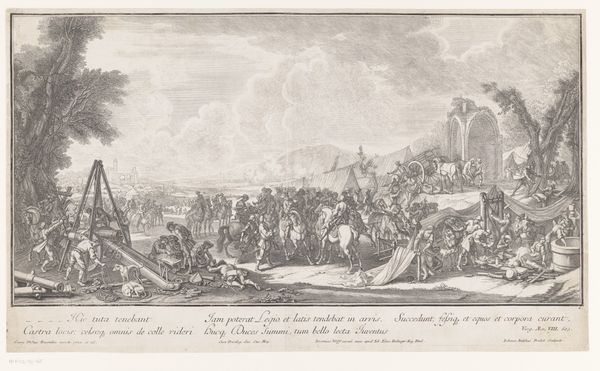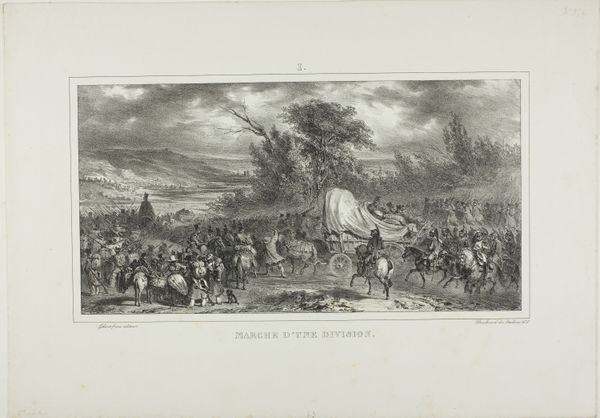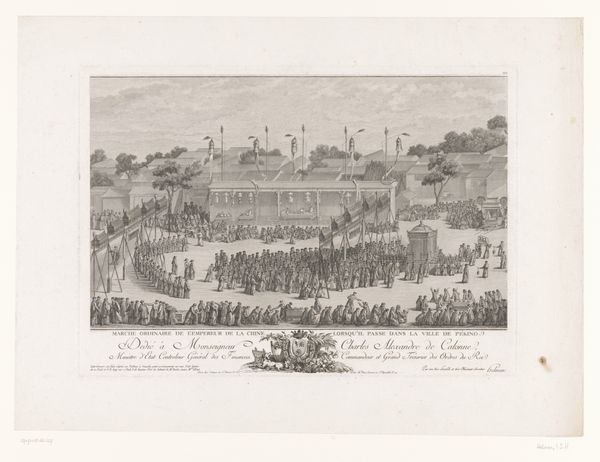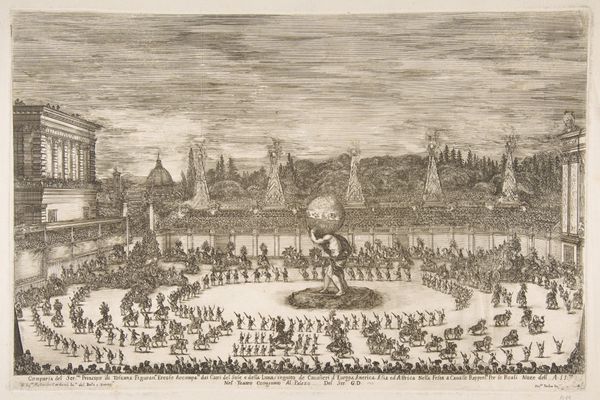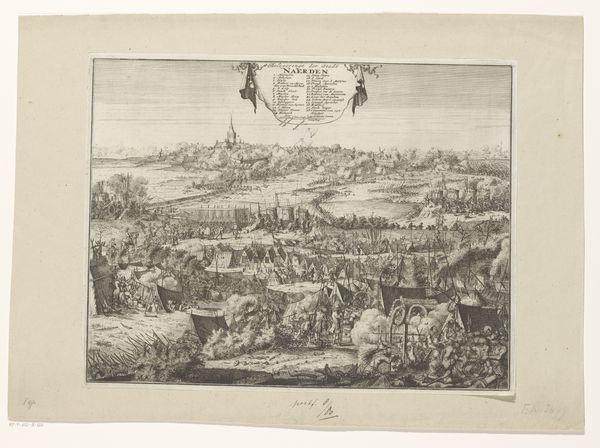
Intocht van hertog Jan van Beieren te Leiden op 18 augustus 1420 opgevoerd door de Leidse studenten op 8 februari 1840 1840
0:00
0:00
print, engraving
#
narrative-art
#
pen drawing
# print
#
line
#
cityscape
#
history-painting
#
academic-art
#
engraving
#
realism
Dimensions: height 523 mm, width 682 mm
Copyright: Rijks Museum: Open Domain
Editor: This is an engraving from 1840 titled "Intocht van hertog Jan van Beieren te Leiden op 18 augustus 1420 opgevoerd door de Leidse studenten op 8 februari 1840." It depicts what looks like a historical reenactment in a city. The sheer number of figures is striking. How should we interpret a piece like this? Curator: Given its historical context, this print raises some interesting questions about the construction of history itself. What does it mean for students to reenact this specific event – the entry of Duke John of Bavaria into Leiden? How does this 1840 performance reflect the political and social climate of the time, and what were the Leiden students trying to express? Is this a moment of cultural pride, a reflection on power dynamics, or perhaps even a subtle form of commentary on contemporary issues through a historical lens? Editor: So, it's not just about accurately portraying a past event, but about the students’ message in 1840? Curator: Exactly. Consider that the 19th century saw a surge in nationalistic sentiment and historical romanticism. Such reenactments served to solidify a particular version of history, often reinforcing dominant narratives. Who is included, and excluded, in the staging of this event? Who does it serve? Do the costumes and setting contribute to the reinforcement of hierarchy? It would be very helpful to know more about what type of political and social statements that the Leiden students would be attempting to make. Editor: That makes me think differently about it. I was focusing on the 'realism' of the depiction but I see now that the point is about a conscious reconstruction. Curator: Yes. Also, note the very formal, decorative border of the engraving, which also reflects an effort to validate its own claims, or lend credence to what is actually a selective and interpreted snapshot of history. Editor: Thank you! It's helpful to look beyond the immediate scene and think about the layers of meaning within the historical and social context. Curator: My pleasure. Approaching it this way helps us decode the piece not just as a historical record but as a cultural artifact shaped by specific ideologies and intentions.
Comments
No comments
Be the first to comment and join the conversation on the ultimate creative platform.
